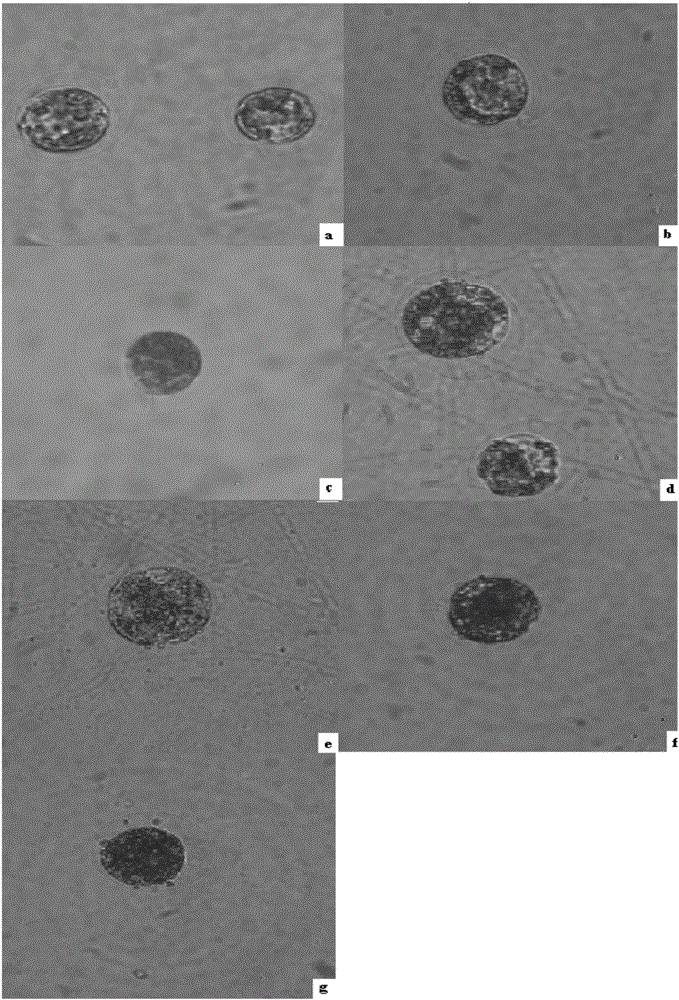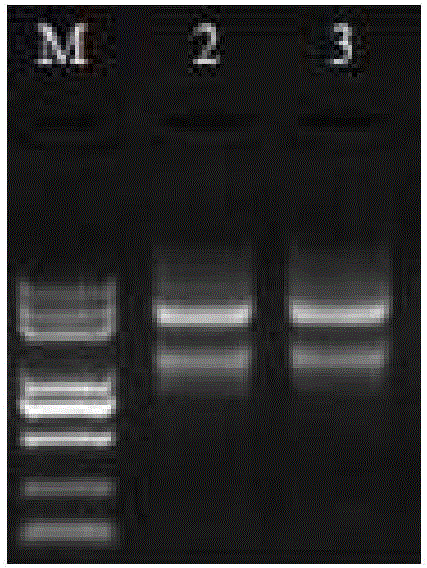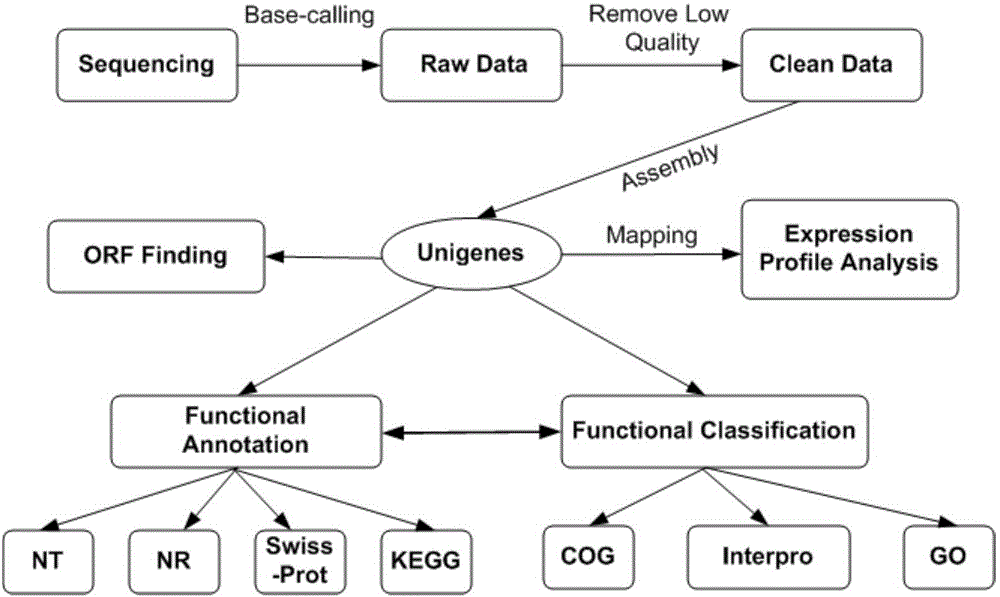Gene related to astaxanthin accumulation in haematococcus pluvialis and screening method of gene
A technology of Haematococcus pluvialis and astaxanthin, which is applied in the field of molecular biology, can solve problems such as high non-specificity and difficulty in success, and achieve the effects of speeding up the research process, efficient screening, and shortening the test time
- Summary
- Abstract
- Description
- Claims
- Application Information
AI Technical Summary
Problems solved by technology
Method used
Image
Examples
Embodiment 1
[0036] The N-deficient medium lacks N source in the preparation process than the normal medium. Haematococcus pluvialis in the logarithmic growth phase was collected and cultured in MCM medium deficient in N element, and the light intensity was 200 μmol photon / m -2 the s -1 Continuous lighting. And the Haematococcus pluvialls were observed under cell microscope at 0h, 12h, 24h, 36h, 48h, 64h, and 72h after induction, and the Haematococcus pluvialls were collected and frozen with liquid nitrogen for future use. It was found that N starvation plus strong light could well induce the accumulation of astaxanthin in Haematococcus pluvialis.
[0037] figure 1 These are the microscopic examination results of Haematococcus pluvialis cells at 0 hour, 12 hours, 24 hours, 36 hours, 48 hours, 64 hours, and 72 hours of induction respectively. It can be seen from the results that the cells were similar to the blank control group at 12 hours of induction, and there was no change. Howev...
Embodiment 2
[0038] Example 2 Construction of cDNA library
[0039]The normally cultured cells and the cells after induction for 24 hours were respectively collected and filtered through a 2 μm filter membrane. After filtration, the algae cells and the filter membrane were quick-frozen with liquid nitrogen and ground for RNA extraction. The total RNA of Haematococcus pluvialis was extracted using Trizol reagent (Invitrogen, USA), extracted according to the operating instructions and tested for its quality, and the dried RNA was dissolved in 30 μl of DEPC water. The extracted total RNA was detected by agarose gel. The detection parameters of the agarose gel are: gel concentration: 1%, voltage: 180v, electrophoresis time: 16min. According to the electropherogram ( figure 2 ) detection results, it can be seen that the extracted Haematococcus pluvialis RNA bands are clear and complete, without genomic DNA pollution, and without obvious tailing phenomenon. Agilent 2100 test shows that the R...
Embodiment 3
[0040] Embodiment 3 bioinformatics analysis
[0041] Sequencing by solexa, according to image 3 The analysis path was used to analyze and organize the raw sequencing data to obtain the data in Table 1. Figure 4 is the sequence length distribution.
[0042] Table 1: Reads from cDNA library sequencing
[0043]
[0044] BLASTN and BLASTX were used to compare Unigenes with NCBI Nr database and Nr protein database respectively, and the E value was set to 1e-5. These Unigenes were also compared with the SWISS-PROT and COG databases, with an E value of 1e-10 set. In order to explore the metabolic pathways involved in these Unigenes, we used the blastX program to compare the obtained Unigenes with the Kyoto Encyclopedia of Genes and Genomes (KEGG) database.
[0045] Among 36,151 contigs, 16,473 (45.6%) had obvious matches with NT or Nr databases. 8685and6380contig were matched with SWISSPROT and COG databases, respectively. Contigs that did not match may be gene sequences u...
PUM
| Property | Measurement | Unit |
|---|---|---|
| Molecular weight | aaaaa | aaaaa |
Abstract
Description
Claims
Application Information
 Login to View More
Login to View More - R&D
- Intellectual Property
- Life Sciences
- Materials
- Tech Scout
- Unparalleled Data Quality
- Higher Quality Content
- 60% Fewer Hallucinations
Browse by: Latest US Patents, China's latest patents, Technical Efficacy Thesaurus, Application Domain, Technology Topic, Popular Technical Reports.
© 2025 PatSnap. All rights reserved.Legal|Privacy policy|Modern Slavery Act Transparency Statement|Sitemap|About US| Contact US: help@patsnap.com



